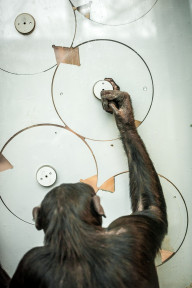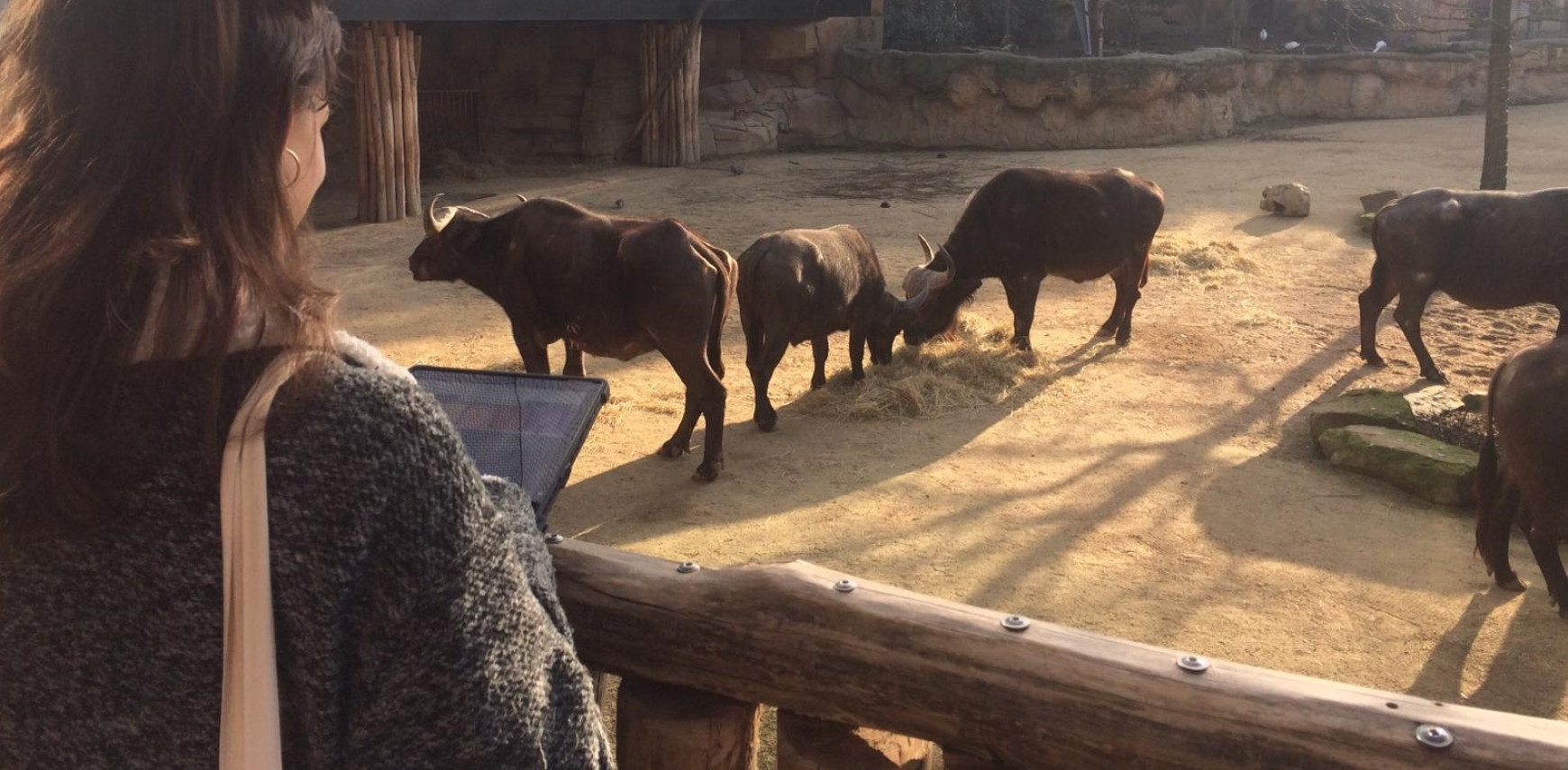Animal Welfare Science
Animal welfare is gaining ever more attention in zoos, not only due to societal, ethical and legal requirements, but also because optimal welfare can ensure stable and healthy populations. Antwerp ZOO and Planckendael ZOO have a dedicated animal welfare scientist. “I am responsible for taking a scientific approach to better understand, assess and monitor zoo animal welfare, and to use this knowledge for improving zoo animal well-being and informing evidence-based animal management and husbandry in close collaboration with the zoo-veterinarian, animal keepers and with the curators who are responsible for quality accommodation”, says Marina Salas, a specialist in animal welfare science in our zoos.
BACKGROUND
It is widely accepted that animals are capable of feeling and experiencing emotions such as fear, stress, or pain, similar to humans, and that animals can experience good or bad welfare. We aim to concentrate on using scientific methods to gain a better understanding of what is good or bad animal welfare, how to measure and monitor animal welfare, and to study the factors that may promote or compromise an animal’s wellbeing.
Animal welfare includes the behaviour, emotional state and physical health of an individual. Due to this multidimensional concept of animal wellbeing, there is not a single indicator that can provide enough information in itself to completely assess the welfare of an individual. “However, animal welfare can be measured and assessed scientifically using a combination of several indicators, which can be roughly divided into resource-based or animal-based indicators”, Marina explains.
Using resource-based indicators we evaluate for example water provision, enclosure size and design, group size and composition, or environmental enrichment. Such indicators focus on an assessment of the environment surrounding the animal, but not the animal itself, and as a result are easier to evaluate and apply.
Animal-based indicators, on the other hand, are more important for the assessment of individual welfare, as these indicators include all those variables that are measured directly on the animals themselves. Individual-based indicators include changes in the animals’ behaviour, overall appearance and health, and physiological parameters, such as glucocorticoid concentrations.
HOW EXACTLY DOES THE RESEARCH WORK?
Animal welfare research in our zoos is focussed largely on three areas.

The first topic is about using a practical and applied approach to Animal Welfare Science. To this end, we work with students and interns from different universities to develop applied and fundamental projects to study animal welfare. For example, we aim to regularly evaluate the effect of environmental enrichment on the daily activity budgets of the animals in our zoos. Environmental enrichment is a combination of techniques developed to give animals the opportunity to express natural behaviours, and that would otherwise unlikely be seen in captivity. The aim of environmental enrichment is to increase the physical, social, and temporal complexity of captive settings.
We work with students and interns from different universities to develop applied and fundamental projects to study animal welfare.
Then second focal area is the development and application of welfare protocols. Welfare protocols are standardized species-specific procedures specifically designed for the assessment of the wellbeing of animals kept in captivity. Generally such protocols include a combination of several welfare indicators. The ultimate goal of a welfare protocol is to use it as a practical management tool that will help to detect shortcomings or areas for improvement of facilities, or the management of animals, or to identify specific welfare problems at an individual level. “Currently, we are working on developing and applying a protocol for the assessment of welfare in captive giraffes in collaboration with the Zoo Animal Welfare Education Centre”, explains Salas.
Currently, we are working on developing and applying a protocol for the assessment of welfare in captive giraffes in collaboration with the Zoo Animal Welfare Education Centre.
Although animal welfare research is gradually becoming standard practice in many zoos worldwide, general understanding of what comprises zoo animal welfare and how to objectively evaluate it, is still rather limited.
To gain a better scientific understanding of what is animal welfare, and how to measure it, the third research area is to take a more fundamental approach to Animal Welfare Science. By studying specific welfare issues, and the scientific validation of animal welfare indicators we aim to create better knowledge of which factors are beneficial and which are detrimental for the wellbeing of an animal. The new insights help to develop and assess methods and tools to objectively measure and monitor animal welfare, and are the foundation for the welfare assessment in other species of wild animals in captivity.
The general understanding of what comprises zoo animal welfare and how to objectively evaluate, it is still rather limited.
WHAT IMPACT WILL THE RESEARCH HAVE?
The ultimate goal of our research projects is to collect scientific information to not only objectively assess but also monitor welfare in wild animals in captivity. The results of our studies can lead to recommendations and advices that could be useful to improve animal welfare in our zoos, but also in other institutions that hold animals in captivity.
Our goal is to collect scientific information to objectively assess and monitor zoo animal welfare.

